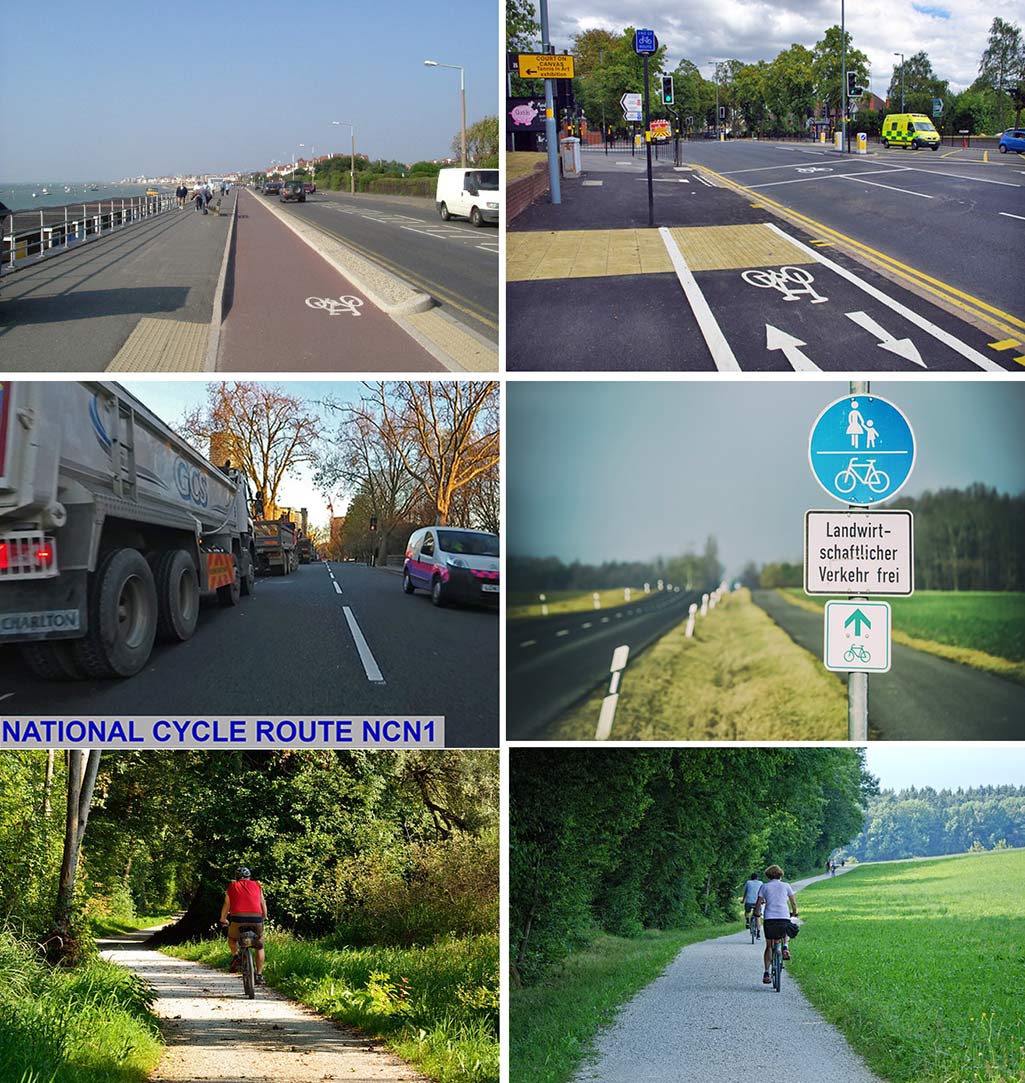Greenway and cycleway landscape architecture
These paths are all cycleways. They are not all greenways. Sustrans National Cycle Route NCN1 on the Isle of Dogs is not a greenway, not a green street and not a promenade. It is a badly conceived, planned and designed exercise is worthless signposting. Thankfully, other sections of NCN1 are much better.
Charles Little, in a 1990 book, said the term ‘greenway’ was coined from the ‘green’ in greenbelt and and the ‘way’ in parkway. He probably took greenbelt in its UK sense to mean ‘a belt of open countryside surrounding a town or city’ and parkway, in its US sense, to mean ‘a broad arterial road planted with trees; an open landscaped highway or boulevard’. Little used greenway to mean ‘a linear open space established along either a natural corridor, such as a riverfront, stream valley, or ridgeline, or overland along a railroad right-of-way converted to recreational use, a canal, scenic road or other route’.
The term ‘greenway’ acquired momentum from a 1995 special issue of Landscape and Urban Planning edited by Ahern & Fabos, which led to a series of conferences. The 5th Fábos Conference on Landscape and Greenway Planning was held in 2016. My short definition of the term greenway is ‘a route which is good from an environmental point of view’. As a longer definition, I like Jack Ahern’s explanation that ‘greenways are networks of land containing linear elements that are planned, designed and managed for multiple purposes including ecological, recreational, cultural, aesthetic or other purposes compatible with the concept of sustainable land use’.
Sustrans, a UK non-profit set up to promote cycleway planning, explain their use of the term greenway. It includes the 1/3rd of the National Cycle Network that is traffic-free (eg along old railways, canal towpaths, riverbanks, forest roads and tongues of open space leading into urban areas). For the continuation of these Greenway routes along roads in towns, Sustrans uses the term Green Streets . For traffic-free urban routes Sustrans use the term Promenades.
Sustrans’ terminology is muddled. Non-cycleable paths are obviously ‘green’ ‘ways’. Only some sections of the Thames Path are cycle ways but I would describe most of it as a greenway. It runs through urban and rural areas and, in the east, beside salt water. ‘Green street’ is a very useful term but, again, many green streets are not cycleways. ‘Promenade’ is a posh term. But it derives from the French promener (‘to walk’) making it unsuitable for cycle routes (the OED definition is ‘a leisurely walk, esp. one taken in a public place so as to meet or be seen by others’).
I am critical of the Sustrans philosophy of cycleway planning, but for what they don’t do rather than for what they do do. As argued in a lecture on Cambridge Greenway Planning, which was planned by a former Sustrans engineer, cycleways should not be blinkered single-purpose engineering projects. They should be an aspect of urban and rural landscape design. In Ahern’s words, they should be ‘planned, designed and managed for multiple purposes including ecological, recreational, cultural, aesthetic or other purposes compatible with the concept of sustainable land use’.
The Cambridge cycle way planning project begun in 2017 has the name Cambridge Greeways. I believe this was used in Sustrans’s sense but am delighted that it is being implemented as a multi-objective greenways project.

